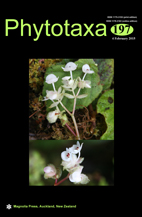Abstract
The pattern of morphological variation in Miconia subcompressa, a species endemic to the mountains of southern Hispaniola, is assessed by a consideration of numerous herbarium specimens (many collected by the authors) and a phenetic (Principal Components) analysis of 14 vegetative characters, and morphological entities are compared with a phylogenetic hypothesis based on nrDNA-sequence variation (ITS, ETS) including several accessions of this species (from across its geographic and elevational range) as well as related species of Miconia sect. Chaenopleura, especially those of the Massif de la Hotte, Haiti. Our morphological data, incorporating recently collected herbarium material, indicate that the populations of M. subcompressa from the Monteada Nueva region (= Loma Trocha de Pey) are diagnosable morphologically from those of the Massif de la Selle and Massif de la Hotte, and these plants are described here as Miconia subcompressa subsp. beverlyana. Additionally, this study supports the recognition of the populations from moist pine forest/cloud forest habitats of the Massif de la Hotte, occurring mainly from 1450–2300 m, as M. subcompressa subsp. plumieri (= M. plumerii, sic). Finally, Miconia subcompressa may be paraphyletic, as preliminary molecular evidence suggests that M. xenotricha may have arisen within its phylogenetic structure.

